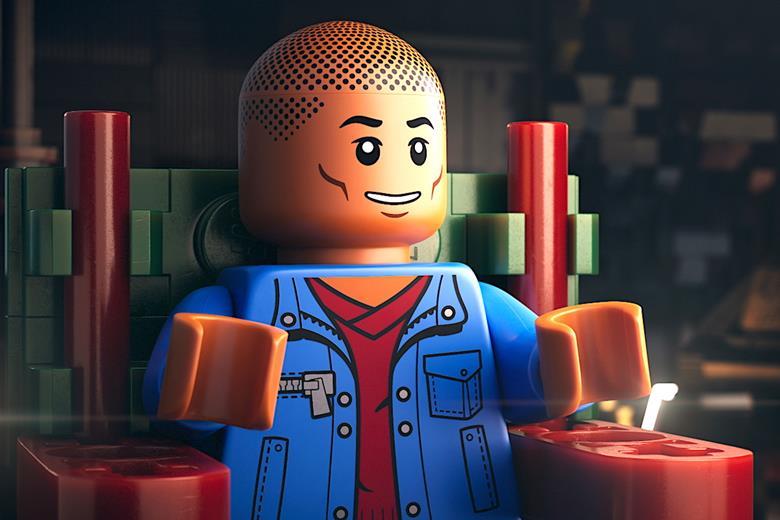Pharrell Williams has made a name for himself as a musical artist in his own right. Still, he is also a significant contributor to the advancement of the careers of other musical artists. His story is worth telling through film, and the artist himself wishes to reveal his story. However, Williams wants to tell his life story through Lego animation with the help of acclaimed documentary filmmaker Morgan Neville. The film delivers an exciting, vibrant, and creative approach to artist documentaries/biopics through a mostly child-oriented medium. Whether or not this approach actually works is why I am here.
Through digital Lego animation, Pharell Williams details his journey from his childhood through today. Williams has always felt like a different human. He has a way of visualizing music and art, and this has translated to his artistic expressions and “beats” that have driven his career thus far. The film recreates his story through his perspective and gives audiences a glimpse into his feelings and emotions as he discovers and develops his “voice” within the music industry and how fame and success affected him through the years.
One of my co-workers at my day job actually brought this film to my attention. When she asked me what I thought about Pharrell’s Lego movie, I thought she was joking or talking about some fan film trailer she discovered on YouTube. When I finally actually watched the trailer in the theater, I felt that the concept probably sounded horrible as a pitch, but seeing clips of the film certainly caught my interest. Now that I have seen the finished film, I can say that this movie is actually visually exciting and entertaining.
It is an extraordinary approach to the story that makes this film special. Now, I know many people feel like this is some kind of expensive gimmick in telling Pharrell’s story, but after getting a glimpse into the artist’s life and career, it all makes sense. Pharrell Williams is not a typical musical artist. He obviously has great talent and is a visionary when it comes to his medium. The fact that he wants to tell his story in an unusual, artistic way totally makes sense.
Still, the fact that this is a story about an adult musician/singer is where this film gets held back. Lego is a brand that has spent most of its existence being geared toward children. And most of the Lego movies that have been released have this demographic in mind. That said, it seems that Lego did not want to reveal anything too adult about Pharrell through this movie. The filmmakers find some hilariously creative ways to dance around certain content, which is acceptable for younger audiences. However, any adults wanting genuine insight into Williams’s life might feel slighted. The use of Lego in this film presents a unique challenge, as it is a medium primarily associated with children’s entertainment, but it also offers a creative and visually engaging way to tell Williams’s story.
In addition, the fact that this film is told from Pharrell’s perspective is a bit short-sighted and glosses over what otherwise would be a genuine revelation of the complete picture. The film seems to present a somewhat sanitized and filtered version of Williams, perhaps to maintain his public image. Overall, I enjoyed the film, but I have some reservations. The animation is amazing, amusing, and creative, but the story feels a bit sanitized and filtered to portray how Williams wants to be viewed.
I give this film lots of points for being inventive and creative, but I would love to see either a PG-13 or R-rated cut of the film that doesn’t hold back with language or content. Such a version could provide a more complete and unfiltered picture of Pharrell Williams, which could be particularly interesting for adult fans. Besides, it would be really cool and fascinating to witness a Lego movie geared for more mature audiences, given this is a story about various aspects of an adult artist. I still strongly recommend this film, as it is not a typical biopic or documentary about a talented celebrity.
